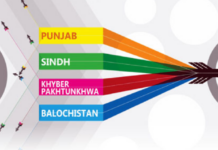The Government of Pakistan added Rs138.36 billion to its total debt during the week ending June 6, 2025, raising the cumulative net borrowing for the ongoing fiscal year to Rs2.54 trillion, according to the State Bank of Pakistan’s latest provisional estimates.
This weekly increase in debt was primarily driven by borrowing for budgetary support, which amounted to Rs138.51 billion. In contrast, borrowing for commodity operations was limited to just Rs78.53 million, while a modest Rs223.3 million was repaid under the category marked as “others.”
Government borrowings are typically classified into three categories—budgetary support, commodity operations, and others—depending on the intended use of the funds. Of these, budgetary support remains the most significant component, which typically finances the government’s day-to-day spending and budget deficits.
As of June 6, cumulative borrowing for the fiscal year under budgetary support stood at Rs2.84 trillion. At the same time, the government retired Rs301.72 billion from loans previously taken for commodity operations (usually used to procure and manage strategic stocks such as wheat and sugar), while a net Rs1.14 billion was retired under the “others” category.
Within budgetary borrowing, the two principal sources of funds are the State Bank of Pakistan (SBP) and the country’s scheduled banks. This fiscal year, the government has relied heavily on scheduled banks for its financing needs. Net borrowing from scheduled banks has amounted to Rs3.09 trillion, with the federal government accounting for Rs3.45 trillion in gross borrowing and the provincial governments retiring Rs361.76 billion.
In contrast, the government’s net position with the SBP has improved. Overall, a net sum of Rs247.38 billion has been repaid to the central bank this fiscal year. While the federal government borrowed Rs263.69 billion from the SBP, the provincial governments collectively retired Rs470.5 billion. Additionally, the governments of Azad Jammu and Kashmir and Gilgit-Baltistan retired Rs25.84 billion and Rs14.73 billion, respectively.
These weekly figures reflect the government’s persistent dependence on domestic debt to bridge fiscal gaps. The growing reliance on scheduled banks, in particular, underscores the pressure on commercial lending channels, potentially impacting credit availability for the private sector. It also signals tighter liquidity conditions, especially as the fiscal year nears its close.























